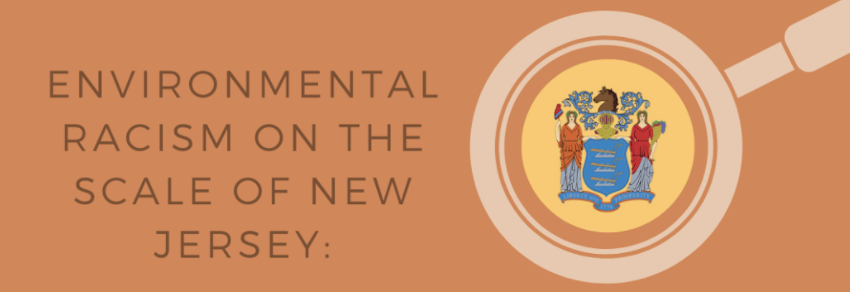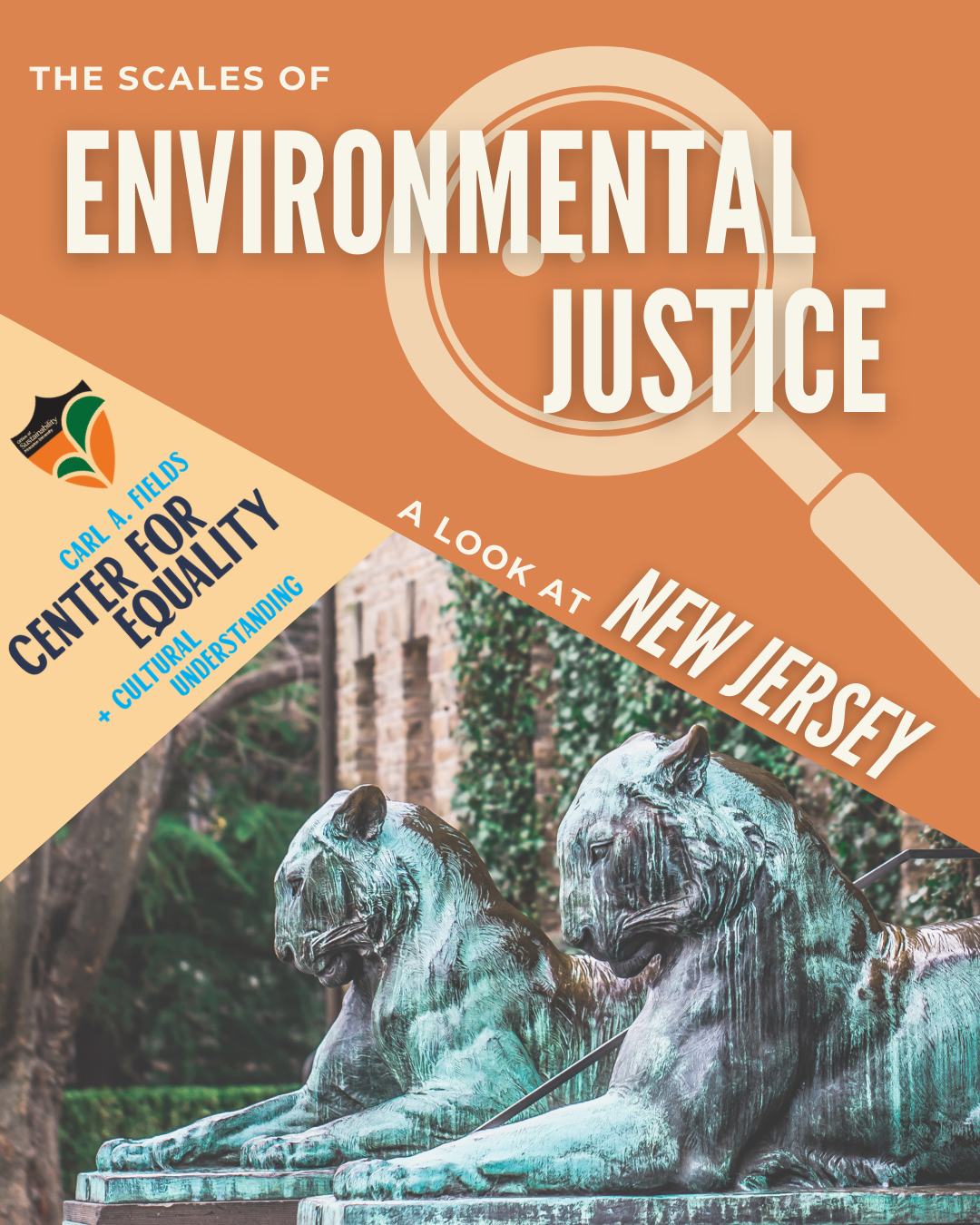Research and Graphics by Lazarena Lazarova ‘21
Edited by Christopher Lugo ‘22

Environmental Justice (EJ) has come to be understood as a fundamental component of any comprehensive response to the environmental challenges of our contemporary moment. With the Black Lives Matter protests of 2020, it has been foregrounded in conversations about racial justice and other issues around which activists center their work. New Jersey, in particular, has become one of the first state governments to address the needs of marginalized communities and implement environmental justice through legislation.
Before diving in, let’s touch briefly on the concept of environmental justice. What is it exactly, and how can we practice it? According to Green Action for Health and Environmental Justice, a multiracial grassroots organization, EJ is defined as “the values, rules, regulations, behaviors, policies, and decisions that support sustainability, where all people can hold with confidence that their community and natural environment is safe and productive”1.
New Jersey has taken promising but preliminary steps towards realizing that goal. One bill that was passed by the legislature into New Jersey state law on August 27, 2020 expands the purview of the Department of Environmental Protection. The effects of any proposed projects seeking a permit from the department on “overburdened communities” would have to be considered before the project could go forward. The bill defines “overburdened communities” as those with at least 50% of residents being low-income and 40% of residents being racial minorities or having limited English proficiency. Power plants and waste facilities like landfills and sewage treatment plants would have to reckon with the impact they impose on nearby overburdened communities. New Jersey Environmental Justice Alliance has expressed support for the bill2,3.
In addition to this most recent effort, the legislature has passed reforms to the state’s learning standards, requiring all students to learn about climate change and the science behind it. There is hope that a more robust education in climate science will raise a generation of leaders and organizers who are both well-informed on the issue of climate change and acknowledge the urgency with which it must be addressed4. There is plenty our generation can do here and now, too. Volunteer with organizations like the Environmental Justice Alliance, lobby your local government to research and implement a climate action plan, and educate yourself on the links between racial justice and environmental justice.

Sources:
- “Environmental Justice & Environmental Racism”. Green Action for Health and Environmental Justice. http://greenaction.org/what-is-environmental-justice/
- Warren, Michael Sol.“Landmark bill to protect poor communities from pollution just passed N.J. Legislature”. Nj.com – True New Jersey. August 28, 2020. https://www.nj.com/news/2020/08/landmark-bill-to-protect-poor-communities-from-pollution-just-passed-nj-legislature.html
- Warren, Michael Sol and Brent Johnson. “Murphy backs plan to protect N.J. low-income communities from more pollution”. Nj.com – True New Jersey. June 19, 2020. https://www.nj.com/politics/2020/06/murphy-backs-plan-to-protect-nj-low-income-communities-from-more-pollution.html
- White, Kimberly. “New Jersey Becomes First U.S. State to Require Schools to Teach Climate Change”. Planetary Press. June 17, 2020. https://www.theplanetarypress.com/2020/06/new-jersey-becomes-first-u-s-state-to-require-schools-to-teach-climate-change/#:~:text=The%20newly%20adopted%20guidelines%20make,educators%20over%20the%20past%20year
